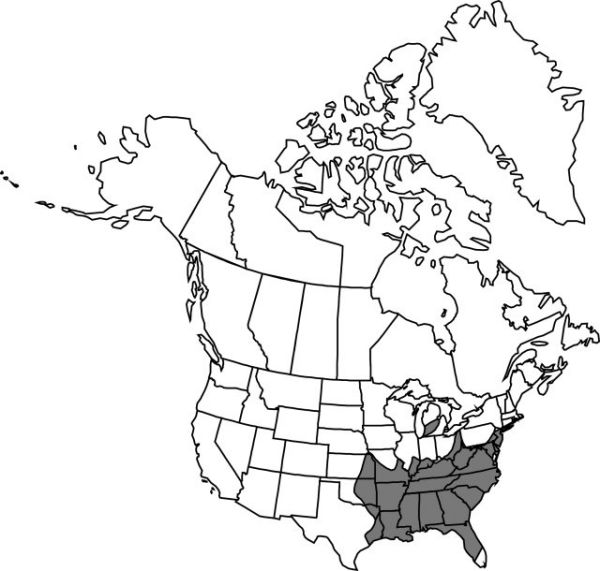Spiranthes tuberosa
Herb. Raf., 45. 1833.
Plants 5–30 cm. Roots solitary, vertical, tuberous, turbinate, mostly to 1 cm diam. Leaves fugacious, 3–5, basal, spreading, oval-oblanceolate, 2–6 × 1–2 cm. Spikes loosely spiraled, 4–7 flowers per cycle of spiral; rachis glabrous. Flowers pure white, gaping from near middle, tubular portion less than 3 mm; sepals distinct to base, 5 × 1 mm; lateral sepals slightly spreading; petals linear to lance-oblong, 5 × 1 mm, apex acute to obtuse; lip 5 × 2.5 mm, ovate to oblong, apex dilated with broad crisped, finely lacerate margin; veins several, branches very short; basal calli long-pointed, mostly to 1 mm; viscidium linearlanceolate; ovary mostly 3 mm. Seeds monoembryonic.
Phenology: Flowering Jun–Sep.
Habitat: Dry to open woods, outcrops, old fields, roadsides, cemeteries
Elevation: 0–400 m
Distribution

Ala., Ark., Conn., Del., D.C., Fla., Ga., Ill., Ind., Kans., Ky., La., Md., Mass., Mich., Miss., Mo., N.J., N.Y., N.C., Ohio, Okla., Pa., R.I., S.C., Tenn., Tex., Va., W.Va.
Discussion
The nomenclatural history of Spiranthes tuberosa is rather complex, and among the names applied to it are Spiranthes beckii Lindley and Ibidium beckii (Lindley) House. See D. S. Correll (1950) for a discussion.
This species is easily recognized by its pure white flowers, broad crisped lip, and fugacious leaves.
Selected References
None.